Potsdamer Platz
Despite the name, Potsdamer Platz is not just a square but Berlin’s newest quarter, birthed in the ‘90s from terrain once bisected by the Berlin Wall. A collaborative effort by the world’s finest architects, it is a vibrant showcase of urban renewal. A visit here is easily combined with the Kulturforum, a cluster of top-notch museums and concert halls, including the world-famous Berliner Philharmonie.

The Sights in a Day
![]() MStart the day getting the lay of the land by whizzing to the top of the Panoramapunkt for bird’s-eye views of Berlin’s landmarks, perhaps over a coffee. Make your way to the Gemäldegalerie for a rendezvous with Rembrandt and Co, then once you’ve exhausted your attention span head back to Potsdamer Platz and join the business brigade for lunch at Qiu.
MStart the day getting the lay of the land by whizzing to the top of the Panoramapunkt for bird’s-eye views of Berlin’s landmarks, perhaps over a coffee. Make your way to the Gemäldegalerie for a rendezvous with Rembrandt and Co, then once you’ve exhausted your attention span head back to Potsdamer Platz and join the business brigade for lunch at Qiu.
![]() RIt’s time to take a closer look at the futuristic architecture of the Sony Center before spending the afternoon delving first into the darkness of the Nazi era at the Topographie des Terrors and then the Cold War at Checkpoint Charlie. By now you’re probably ready for a drink, so head to Solar for libations with a view.
RIt’s time to take a closer look at the futuristic architecture of the Sony Center before spending the afternoon delving first into the darkness of the Nazi era at the Topographie des Terrors and then the Cold War at Checkpoint Charlie. By now you’re probably ready for a drink, so head to Solar for libations with a view.
![]() NEither have an early meal at Vapiano before catching a concert at the Berliner Philharmonie or treat yourself to an evening of Michelin-starred cuisine at Restaurant Tim Raue.
NEither have an early meal at Vapiano before catching a concert at the Berliner Philharmonie or treat yourself to an evening of Michelin-starred cuisine at Restaurant Tim Raue.
Top SightsGemäldegalerie
When the Picture Gallery, Berlin’s grand survey of Old Masters, opened in its custom-built Kulturforum space in 1998, it marked the happy reunion of an outstanding collection of European paintings separated by the Cold War for half a century. About 1500 works span the arc of artistic vision between the 13th and 18th centuries. Rooms radiating from the football-field-size central foyer brim with key canvases by Rembrandt, Titian, Goya, Botticelli, Holbein, Gainsborough, Canaletto, Hals, Rubens, Vermeer and other heavy hitters.
MAP
GOOGLE MAP
Gallery of Old Masters; ![]() %030-266 424 242; www.smb.museum/gg; Matthäikirchplatz 8; adult/concession €10/5;
%030-266 424 242; www.smb.museum/gg; Matthäikirchplatz 8; adult/concession €10/5; ![]() h10am-6pm Tue, Wed & Fri, 10am-8pm Thu, 11am-6pm Sat & Sun;
h10am-6pm Tue, Wed & Fri, 10am-8pm Thu, 11am-6pm Sat & Sun; ![]() gM29, M41, 200,
gM29, M41, 200, ![]() bPotsdamer Platz,
bPotsdamer Platz, ![]() dPotsdamer Platz
dPotsdamer Platz
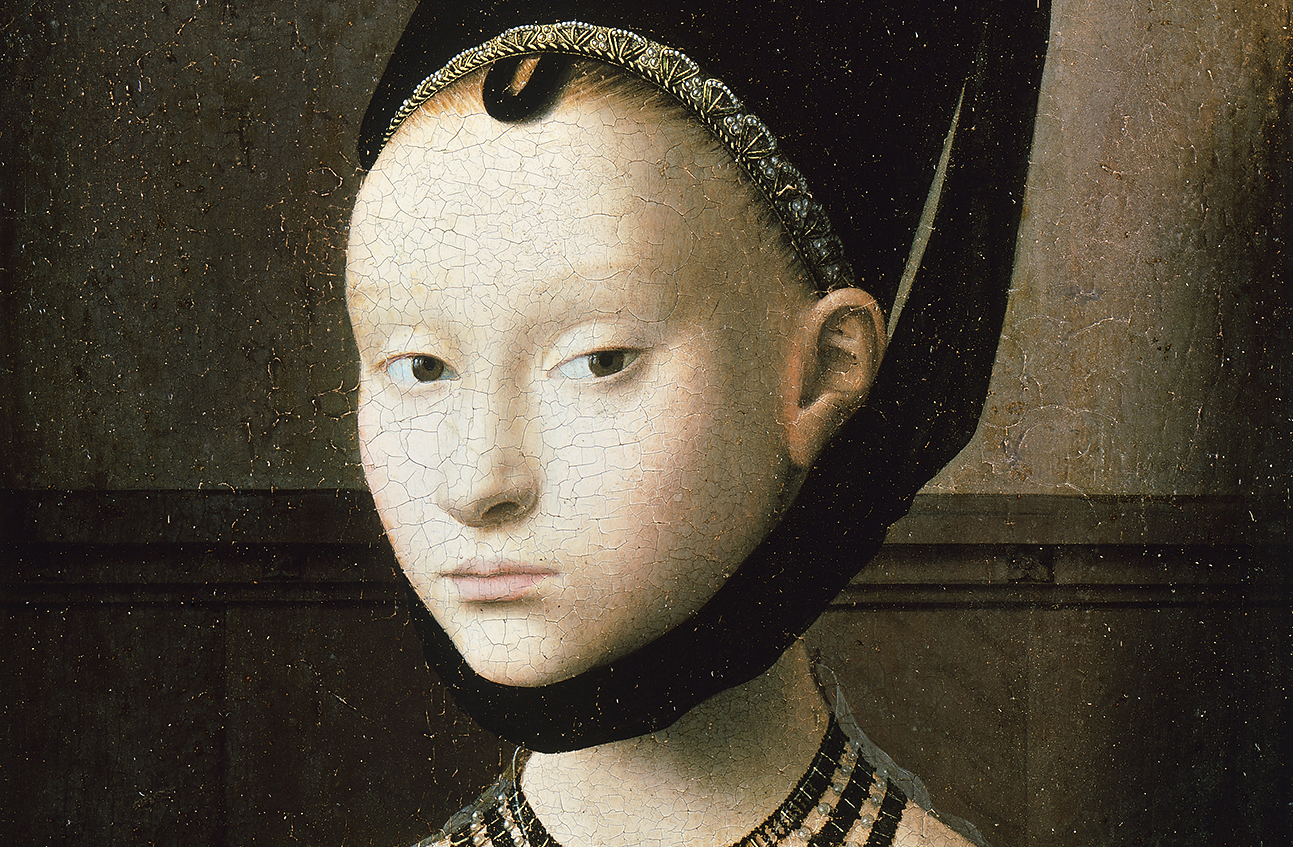
Don’t Miss
Amor Victorius (1602–03)
Room XIV
That’s quite a cheeky fellow peering down on viewers, isn’t it? Wearing nothing but a mischievous grin and a pair of black angel wings, with a fistful of arrows, this Amor means business. In this famous painting, Caravaggio shows off his amazing talent at depicting objects with near-photographic realism achieved by his ingeniously theatrical use of light and shadow.
Dutch Proverbs (1559)
Room 7
In this moralistic yet humorous painting, Dutch Renaissance painter Pieter Bruegel the Elder manages to illustrate more than 100 proverbs and idioms in a single seaside village scene. While some emphasise the absurdity of human behaviour, others unmask its imprudence and sinfulness. Some sayings are still in use today, among them ‘swimming against the tide’ and ‘armed to the teeth’.
Portrait of Hieronymus Holzschuher (1526)
Room 2
Hieronymus Holzschuher was a Nuremberg patrician, a career politician and a strong supporter of the Reformation. He was also a friend of one of the greatest German Renaissance painters, Albrecht Dürer. In this portrait, which shows its sitter at age 57, the artist brilliantly lasers in on Holzschuher’s features with utmost precision, down to the furrows, wrinkles and thinning hair.
Woman with a Pearl Necklace (1662–64)
Room 18
No, it’s not the Girl with a Pearl Earring of book and movie fame, but it’s still one of Jan Vermeer’s most famous paintings: a young woman studies herself in the mirror while fastening a pearl necklace. A top dog among Dutch Realist painters, Vermeer mesmerises viewers by beautifully capturing this intimate moment with characteristic soft brushstrokes.
Fountain of Youth (1546)
Room III
Lucas Cranach the Elder’s poignant painting illustrates humankind’s yearning for eternal youth. Old crones plunge into a pool of water and emerge as dashing hotties – this fountain would surely put plastic surgeons out of business. The transition is reflected in the landscape, which is stark and craggy on the left, and lush and fertile on the right.
Malle Babbe (1633)
Room 13
Frans Hals ingeniously captures the character and vitality of his subject, ‘Crazy Barbara’, with free-wielding brushstrokes. Hals met the woman with the almost demonic laugh in the workhouse for the mentally ill where his son Pieter was also a resident. The tin mug and owl are symbols of Babbe’s fondness for tipple.
Leda with the Swan (1532)
Room XVI
Judging by her blissed-out expression, Leda is having a fine time with that swan who, according to Greek mythology, is none other than Zeus himself. The erotically charged nature of this painting by Italian Renaissance artist Correggio apparently so incensed its one-time owner Louis of Orleans that he cut off Leda’s head with a knife. It was later restored.
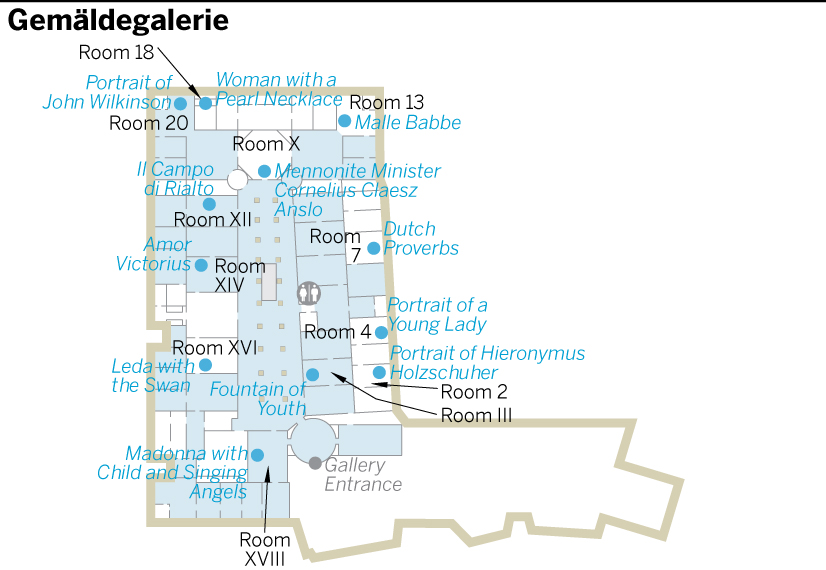
Portrait of a Young Lady (1470)
Room 4
Berlin’s own ‘Mona Lisa’ may not be as famous as the real thing but she’s quite intriguing nonetheless. Who is this woman with the almond-shaped eyes and porcelain skin who gazes straight at us with a blend of sadness and skepticism? This famous portrait is a key work by Petrus Christus and his only one depicting a woman.
Madonna with Child and Singing Angels (1477)
Room XVIII
Renaissance artist Sandro Botticelli’s circular painting (a format called a tondo) is a symmetrical composition showing Mary at the centre flanked by two sets of four wingless angels. It’s an intimate moment that shows the Virgin tenderly embracing – perhaps even about to breastfeed – her child. The white lilies are symbols of her purity.
Mennonite Minister Cornelius Claesz Anslo (1641)
Room X
A masterpiece in the gallery’s prized Rembrandt collection, this large-scale canvas shows the cloth merchant and Mennonite preacher Anslo in conversation with his wife. The huge open Bible and his gesturing hand sticking out in almost 3D style from the centre of the painting are meant to emphasise the strength of his religious convictions.
Portrait of John Wilkinson (1775)
Room 20
Works by Thomas Gainsborough are rarely seen outside the UK, which is what makes this portrait of British industrialist John Wilkinson so special. Nicknamed ‘Iron Mad Wilkinson’ for pioneering the making and use of cast iron, here he is – somewhat ironically – shown in a natural setting, almost blending in with his surroundings.
Il Campo di Rialto (1758–63)
Room XII
Giovanni Antonio Canal, aka Canaletto, studied painting in the workshop of his theatre-set-designer father. Here he depicts the Campo di Rialto, the arcaded main market square of his hometown, Venice, with stunning precision and perspective. Note the goldsmith shops on the left, the wig-wearing merchants in the centre and the stores selling paintings and furniture on the right.
Top SightsPotsdamer Platz
Potsdamer Platz 2.0 is essentially a modern reinterpretation of the historic original, which was the equivalent of New York’s Times Square until WWII sucked all life out of the area. It’s divided into three slices: DaimlerCity, with a large mall, public art and high-profile entertainment venues; the flashy Sony Center, built around a central plaza canopied by a glass roof that shimmers in myriad colours at night; and the comparatively subdued Beisheim Center, which was inspired by classic US skyscraper design.
MAP
GOOGLE MAP
![]() g200,
g200, ![]() bPotsdamer Platz,
bPotsdamer Platz, ![]() dPotsdamer Platz
dPotsdamer Platz
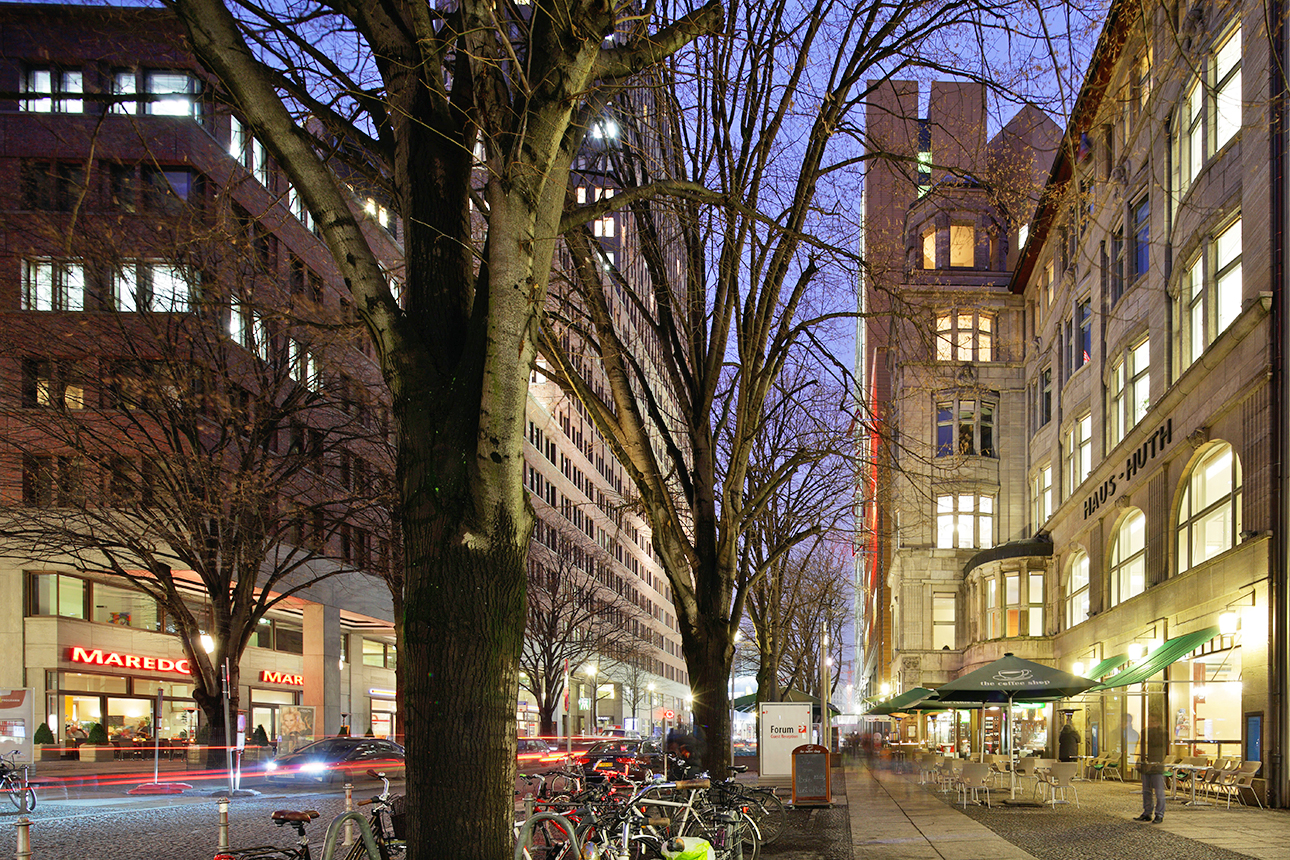
Don’t Miss
Panoramapunkt
Europe’s fastest lift (
GOOGLE MAP
; ![]() %030-2593 7080; www.panoramapunkt.de; Potsdamer Platz 1; adult/concession €6.50/5, without wait €10.50/8;
%030-2593 7080; www.panoramapunkt.de; Potsdamer Platz 1; adult/concession €6.50/5, without wait €10.50/8; ![]() h10am-8pm Apr-Oct, to 6pm Nov-Mar, last entry 30min before closing;
h10am-8pm Apr-Oct, to 6pm Nov-Mar, last entry 30min before closing; ![]() gM41, 200,
gM41, 200, ![]() bPotsdamer Platz,
bPotsdamer Platz, ![]() dPotsdamer Platz) yo-yos up and down the red-brick postmodern Kollhof Building. From the 100m viewing platform, a stunning 360-degree panorama reveals the city's layout. Study key moments in Potsdamer Platz history by taking in the exhibit, then relax in the on-site cafe.
dPotsdamer Platz) yo-yos up and down the red-brick postmodern Kollhof Building. From the 100m viewing platform, a stunning 360-degree panorama reveals the city's layout. Study key moments in Potsdamer Platz history by taking in the exhibit, then relax in the on-site cafe.
Sony Center
Helmut Jahn’s visually dramatic Sony Center (
GOOGLE MAP
; Potsdamer Strasse; ![]() g200,
g200, ![]() bPotsdamer Platz,
bPotsdamer Platz, ![]() dPotsdamer Platz) is fronted by a 26-floor glass-and-steel tower that integrates rare relics from the pre-war Potsdamer Platz. These include a section of facade of the Hotel Esplanade and the opulent Kaisersaal hall, whose 75m move to its current location required some wizardly technology.
dPotsdamer Platz) is fronted by a 26-floor glass-and-steel tower that integrates rare relics from the pre-war Potsdamer Platz. These include a section of facade of the Hotel Esplanade and the opulent Kaisersaal hall, whose 75m move to its current location required some wizardly technology.
Museum für Film und Fernsehen
This Sony Center museum (
GOOGLE MAP
; ![]() %030-300 9030; www.deutsche-kinemathek.de; Potsdamer Strasse 2; adult/concession €7/4.50;
%030-300 9030; www.deutsche-kinemathek.de; Potsdamer Strasse 2; adult/concession €7/4.50; ![]() h10am-6pm Tue, Wed & Thu-Sun, to 8pm Thu, closed Mon;
h10am-6pm Tue, Wed & Thu-Sun, to 8pm Thu, closed Mon; ![]() g200,
g200, ![]() bPotsdamer Platz,
bPotsdamer Platz, ![]() dPotsdamer Platz) charts milestones in German film and TV history. Most engaging are the galleries dedicated to pioneers such as Fritz Lang, ground-breaking movies such as Leni Riefenstahl’s Olympia, German exiles in Hollywood and diva extraordinaire Marlene Dietrich.
dPotsdamer Platz) charts milestones in German film and TV history. Most engaging are the galleries dedicated to pioneers such as Fritz Lang, ground-breaking movies such as Leni Riefenstahl’s Olympia, German exiles in Hollywood and diva extraordinaire Marlene Dietrich.
Weinhaus Huth
The 1912 Weinhaus Huth, one of the first steel-frame buildings in town, was the only Potsdamer Platz structure to survive WWII intact. The Daimler Contemporary (
GOOGLE MAP
; ![]() %030-2594 1420; www.sammlung.daimler.com; 4th fl, Weinhaus Huth, Alte Potsdamer Strasse 5;
%030-2594 1420; www.sammlung.daimler.com; 4th fl, Weinhaus Huth, Alte Potsdamer Strasse 5; ![]() h11am-6pm;
h11am-6pm; ![]() g200,
g200, ![]() bPotsdamer Platz,
bPotsdamer Platz, ![]() dPotsdamer Platz) showcases international abstract, conceptual and minimalist art. Ring the bell to be buzzed in.
dPotsdamer Platz) showcases international abstract, conceptual and minimalist art. Ring the bell to be buzzed in.
Top SightsJüdisches Museum
In a landmark building by American-Polish architect Daniel Libeskind, Berlin’s Jewish Museum offers a chronicle of trials and triumphs in 2000 years of German-Jewish history. The exhibit smoothly navigates through all major periods, from the Romans and the Middle Ages to the Age of Enlightenment and the community’s renaissance today. Find out about Jewish cultural contributions, holiday traditions, the difficult road to emancipation and outstanding individuals such as philosopher Moses Mendelssohn, jeans inventor Levi Strauss and painter Felix Nussbaum.
MAP
GOOGLE MAP
Jewish Museum; ![]() %030-2599 3300; www.jmberlin.de; Lindenstrasse 9-14; adult/concession €8/3, audioguide €3;
%030-2599 3300; www.jmberlin.de; Lindenstrasse 9-14; adult/concession €8/3, audioguide €3; ![]() h10am-8pm, to 10pm Mon, last entry 1hr before closing;
h10am-8pm, to 10pm Mon, last entry 1hr before closing; ![]() bHallesches Tor, Kochstrasse
bHallesches Tor, Kochstrasse
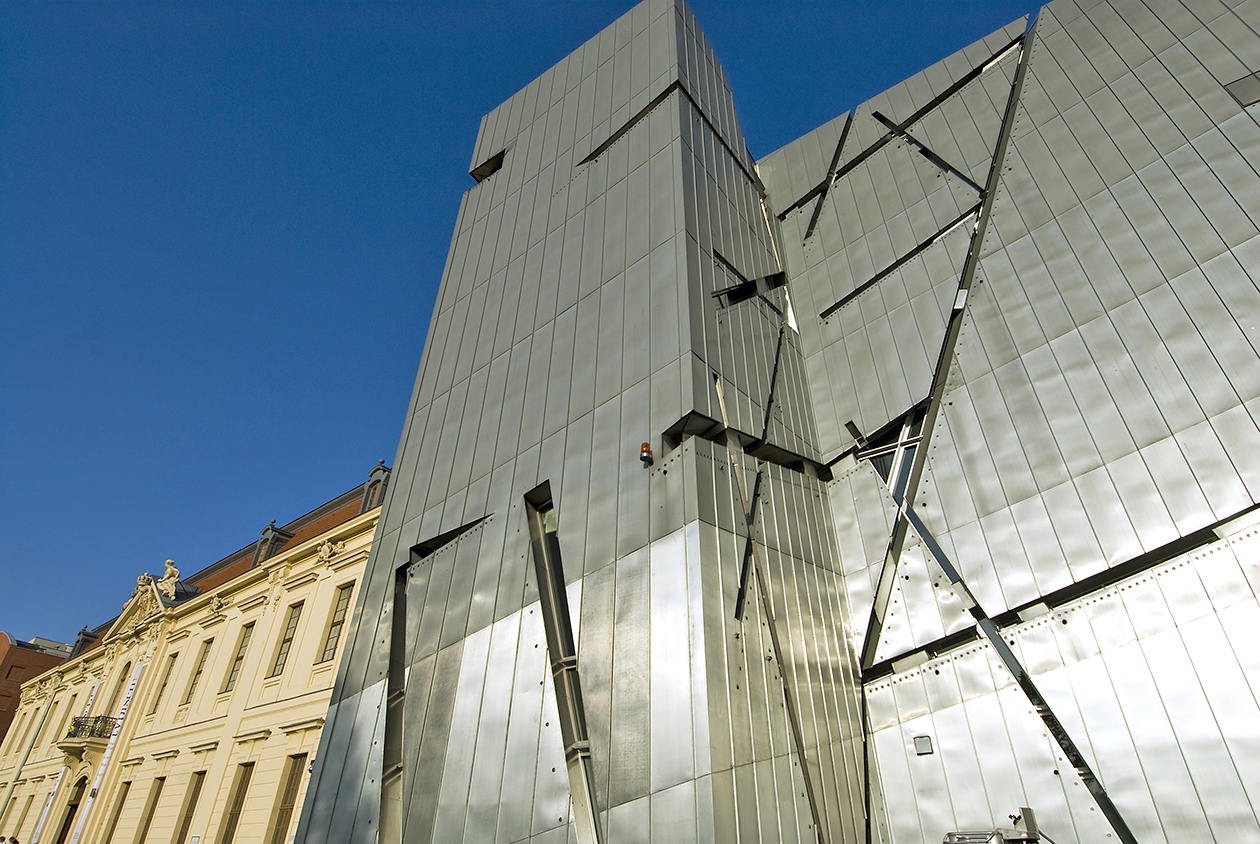
Don't Miss
The Building
Daniel Libeskind’s stunning structure is essentially a 3D metaphor for the tortured history of the Jewish people. Its zigzag outline symbolises a broken Star of David; its silvery zinc walls are sharply angled; and instead of windows there are only small gashes piercing the gleaming facade.
Axes
The visual allegory continues inside, where a steep staircase descends to three intersecting walkways – called ‘axes’ – representing the fates of Jews during the Nazi years: death, exile and continuity. Only the latter leads to the exhibit.
Schalechet (Fallen Leaves)
Menashe Kadishman’s art installation is one of the museum’s most poignant. More than 10,000 open-mouthed faces cut from rusty iron plates lie scattered on the floor in an ocean of silent screams. The space itself, a claustrophobic cement-walled enclosure that Libeskind calls a Memory Void, is a metaphor for the loss of the murdered Jews of Europe.
Moses Mendelssohn Exhibit
Philosopher Moses Mendelssohn (1729–86) was a key figure in the Jewish Enlightenment. His progressive thinking and lobbying paved the way for the Emancipation Edict of 1812, which made Jews full Prussian citizens with equal rights.
Max Liebermann Self-Portrait
Max Liebermann (1847–1935) was Germany’s most famous impressionist, and co-founder of the Berlin Secession movement. This painting shows the Jewish artist as an old man in 1929, wearing his signature Panama hat.

1Sights
3Entertainment
7Shopping
Sights
1Topographie des TerrorsMUSEUM
In the same spot where once stood the most feared institutions of Nazi Germany (including the Gestapo headquarters and the SS central command), this compelling exhibit chronicles the stages of terror and persecution, puts a face on the perpetrators and details the impact these brutal institutions had on all of Europe. A second exhibit outside zeroes in on how life changed for Berlin and its people after the Nazis made it their capital.
(Topography of Terror; ![]() %030-2548 0950; www.topographie.de; Niederkirchner Strasse 8;
%030-2548 0950; www.topographie.de; Niederkirchner Strasse 8; ![]() h10am-8pm, grounds close at dusk or 8pm at latest;
h10am-8pm, grounds close at dusk or 8pm at latest; ![]() c;
c; ![]() bPotsdamer Platz,
bPotsdamer Platz, ![]() dPotsdamer Platz)
dPotsdamer Platz)
1Checkpoint CharlieHISTORIC SITE
Checkpoint Charlie was the principal gateway for foreigners and diplomats between the two Berlins from 1961 to 1990. Unfortunately, this potent symbol of the Cold War has become a tacky tourist trap, although a free open-air exhibit that illustrates milestones in Cold War history is one redeeming aspect.
(cnr Zimmerstrasse & Friedrichstrasse; ![]() h24hr;
h24hr; ![]() bKochstrasse, Stadtmitte)
bKochstrasse, Stadtmitte)
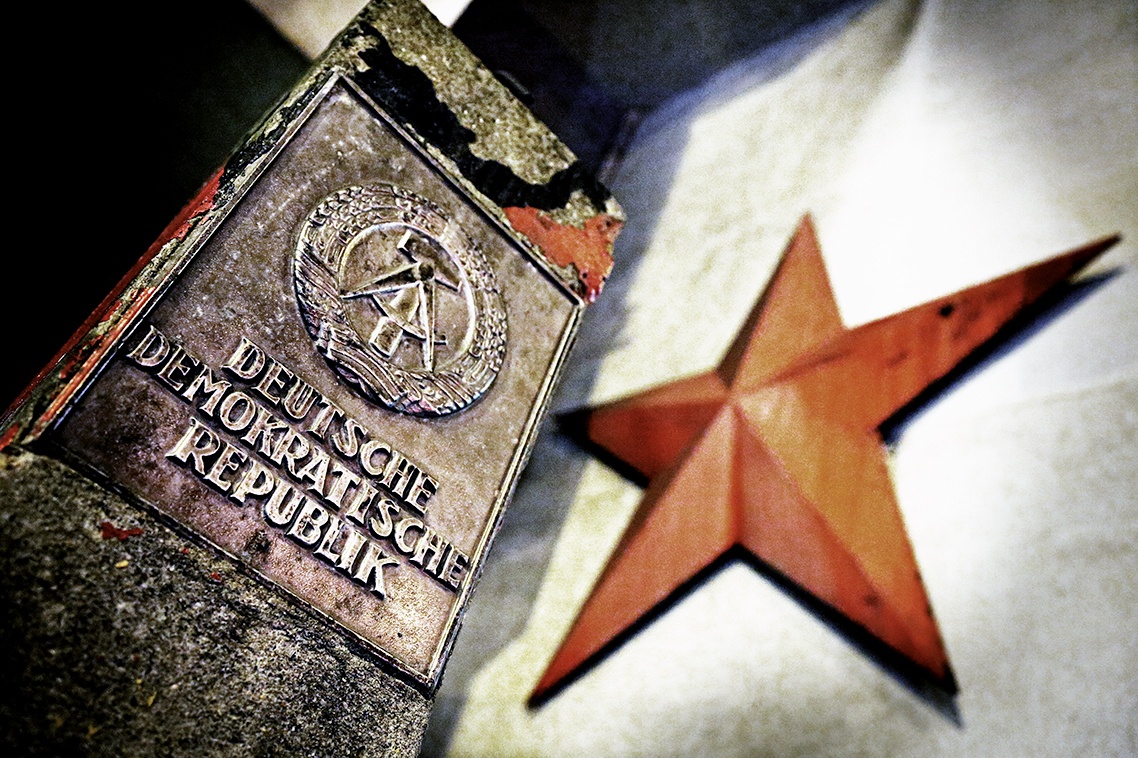
1Gedenkstätte Deutscher WiderstandMEMORIAL
This important exhibit on German Nazi resistance occupies the very rooms where high-ranking officers led by Claus Schenk Graf von Stauffenberg plotted the assassination attempt on Hitler on 20 July 1944. There’s a memorial in the courtyard where the main conspirators were shot right after the failed coup, a story poignantly retold in the 2008 movie Valkyrie.
(German Resistance Memorial Center; ![]() %030-2699 5000; www.gdw-berlin.de; Stauffenbergstrasse 13-14, enter via courtyard;
%030-2699 5000; www.gdw-berlin.de; Stauffenbergstrasse 13-14, enter via courtyard; ![]() h9am-6pm Mon-Wed & Fri, 9am-8pm Thu, 10am-6pm Sat & Sun;
h9am-6pm Mon-Wed & Fri, 9am-8pm Thu, 10am-6pm Sat & Sun; ![]() gM29, M41,
gM29, M41, ![]() bPotsdamer Platz, Kurfürstenstrasse,
bPotsdamer Platz, Kurfürstenstrasse, ![]() dPotsdamer Platz)
dPotsdamer Platz)
1MauermuseumMUSEUM
The Cold War years, especially the history and horror of the Berlin Wall, are engagingly, if haphazardly, documented in this privately run tourist magnet. Open since 1961, the aging exhibit is still strong when it comes to telling the stories of escape attempts to the West. Original devices used in the process, including a hot-air balloon, a one-person submarine and a BMW Isetta, are crowd favourites.
(Haus am Checkpoint Charlie; ![]() %030-253 7250; www.mauermuseum.de; Friedrichstrasse 43-45; adult/concession €12.50/9.50, audioguide €3.50;
%030-253 7250; www.mauermuseum.de; Friedrichstrasse 43-45; adult/concession €12.50/9.50, audioguide €3.50; ![]() h9am-10pm;
h9am-10pm; ![]() bKochstrasse)
bKochstrasse)
1Martin-Gropius-BauGALLERY
With its mosaics, terracotta reliefs and airy atrium, this Italian Renaissance–style exhibition space named for its architect (Walter Gropius' great-uncle) is a celebrated venue for high-calibre travelling shows. Whether it's a David Bowie retrospective, the latest works of Ai Weiwei or an ethnological exhibit on the mysteries of Angkor Wat, it's bound to be well curated and utterly fascinating.
(![]() %030-254 860; www.gropiusbau.de; Niederkirchner Strasse 7; cost varies, free under 16;
%030-254 860; www.gropiusbau.de; Niederkirchner Strasse 7; cost varies, free under 16; ![]() h10am-7pm Wed-Mon;
h10am-7pm Wed-Mon; ![]() gM41,
gM41, ![]() bPotsdamer Platz,
bPotsdamer Platz, ![]() dPotsdamer Platz)
dPotsdamer Platz)
Eating
5Joseph-Roth-DieleGERMAN€
Named for an Austrian Jewish writer, this wood-panelled saloon time-warps you back to the 1920s, when Roth used to live next door. Walls decorated with bookshelves and quotations from his works draw a literary, chatty crowd, especially at lunchtime. There's only four or five German home-cooking classics on the daily-changing menu. Pay at the counter.
(![]() %030-2636 9884; www.joseph-roth-diele.de; Potsdamer Strasse 75; dishes €4-10;
%030-2636 9884; www.joseph-roth-diele.de; Potsdamer Strasse 75; dishes €4-10; ![]() h10am-midnight Mon-Fri;
h10am-midnight Mon-Fri; ![]() bKurfürstenstrasse)
bKurfürstenstrasse)
5Restaurant Tim RaueASIAN€€€
Now here's a twin-Michelin-starred restaurant we can get our mind around. Unstuffy ambience and subtly sophisticated design pair perfectly with Raue's brilliant Asian-inspired plates that each shine the spotlight on a few choice ingredients. Various taste sensations – sweet and salty, mild and hot – play off each other in perfect harmony. The Peking duck is a perennial bestseller. Popular at lunchtime too.
(![]() %030-2593 7930; www.tim-raue.com; Rudi-Dutschke-Strasse 26; 3-/4-course lunch €38/48, 4-/6-course dinner €118/158;
%030-2593 7930; www.tim-raue.com; Rudi-Dutschke-Strasse 26; 3-/4-course lunch €38/48, 4-/6-course dinner €118/158; ![]() hnoon-3pm & 7pm-midnight Tue-Sat;
hnoon-3pm & 7pm-midnight Tue-Sat; ![]() bKochstrasse)
bKochstrasse)
5QiuINTERNATIONAL€€
The two-course business lunch at this stylish lounge also includes soup or salad, a non-alcoholic beverage and coffee or tea. We call that a steal.
(![]() %030-590 051 230; www.qiu.de; Mandala Hotel, Potsdamer Strasse 3; 2-course lunch €14;
%030-590 051 230; www.qiu.de; Mandala Hotel, Potsdamer Strasse 3; 2-course lunch €14; ![]() hbusiness lunch noon-3pm Mon-Fri;
hbusiness lunch noon-3pm Mon-Fri; ![]() g200,
g200, ![]() bPotsdamer Platz,
bPotsdamer Platz, ![]() dPotsdamer Platz)
dPotsdamer Platz)
5VapianoITALIAN€
Matteo Thun’s jazzy decor is a great foil for the tasty Italian fare at this successful German self-service chain. Mix-and-match pastas, creative salads and crusty pizzas are all prepared right before your eyes, and there's fresh basil on the table. Your order is recorded on a chip card and paid for upon leaving. There's another branch in Charlottenburg at Augsburger Strasse 43.
(![]() %030-2300 5005; www.vapiano.de; Potsdamer Platz 5; mains €5.50-10;
%030-2300 5005; www.vapiano.de; Potsdamer Platz 5; mains €5.50-10; ![]() h10am-1am Mon-Sat, 10am-midnight Sun;
h10am-1am Mon-Sat, 10am-midnight Sun; ![]() g200,
g200, ![]() bPotsdamer Platz,
bPotsdamer Platz, ![]() dPotsdamer Platz)
dPotsdamer Platz)
Drinking
6SolarBAR
Watch the city light up from this 17th-floor glass-walled sky lounge above a posh restaurant (mains €18 to €29). With its dim lighting, soft black leather couches and breathtaking views, it's a great spot for a date or sunset drinks. Even getting there aboard an exterior glass lift is half the fun. Enter via the chunky high-rise behind the Pit Stop auto shop.
(![]() %0163 765 2700; www.solar-berlin.de; Stresemannstrasse 76;
%0163 765 2700; www.solar-berlin.de; Stresemannstrasse 76; ![]() h6pm-2am Sun-Thu, to 4am Fri & Sat;
h6pm-2am Sun-Thu, to 4am Fri & Sat; ![]() dAnhalter Bahnhof)
dAnhalter Bahnhof)
6Curtain ClubBAR
Every night at 6pm sharp, it's showtime at the Ritz-Carlton Berlin: a uniformed former beefeater (Tower of London guard) ceremoniously pulls back the heavy curtains on this elegant, wood-panelled bar presided over by cocktail-meister Arnd Heissen, who has created his own range of perfume-inspired cocktails, each served in a unique glass.
(![]() %030-337 776 196; www.ritzcarlton.de; Ritz-Carlton Berlin, Potsdamer Strasse 3;
%030-337 776 196; www.ritzcarlton.de; Ritz-Carlton Berlin, Potsdamer Strasse 3; ![]() hfrom 6pm;
hfrom 6pm; ![]() g200,
g200, ![]() bPotsdamer Platz,
bPotsdamer Platz, ![]() dPotsdamer Platz)
dPotsdamer Platz)
Entertainment
3Berliner PhilharmonieCLASSICAL MUSIC
This world-famous concert hall has supreme acoustics and, thanks to Hans Scharoun’s clever terraced vineyard design, not a bad seat in the house. It’s the home turf of the Berliner Philharmoniker, which will be led by Sir Simon Rattle until 2018. Chamber music concerts take place at the adjacent Kammermusiksaal.
(![]() %tickets 030-254 888 999; www.berliner-philharmoniker.de; Herbert-von-Karajan-Strasse 1;
%tickets 030-254 888 999; www.berliner-philharmoniker.de; Herbert-von-Karajan-Strasse 1; ![]() g200,
g200, ![]() bPotsdamer Platz,
bPotsdamer Platz, ![]() dPotsdamer Platz)
dPotsdamer Platz)

Top TipKulturforum Museums
In addition to the Gemäldegalerie and the Neue Nationalgalerie (
GOOGLE MAP
; www.neue-nationalgalerie.de; Potsdamer Strasse 50; ![]() hclosed for renovation;
hclosed for renovation; ![]() bPotzdamer Platz,
bPotzdamer Platz, ![]() dPotsdamer Platz) (which is closed for renovations), the Kulturforum encompasses three other top-rated museums: the Kupferstichkabinett (Museum of Prints and Drawings;
GOOGLE MAP
;
dPotsdamer Platz) (which is closed for renovations), the Kulturforum encompasses three other top-rated museums: the Kupferstichkabinett (Museum of Prints and Drawings;
GOOGLE MAP
; ![]() %030-266 424 242; www.smb.museum/kk; Matthäikirchplatz; adult/concession €6/3;
%030-266 424 242; www.smb.museum/kk; Matthäikirchplatz; adult/concession €6/3; ![]() h10am-6pm Tue-Fri, 11am-6pm Sat & Sun;
h10am-6pm Tue-Fri, 11am-6pm Sat & Sun; ![]() g200, M41, M29,
g200, M41, M29, ![]() bPotsdamer Platz,
bPotsdamer Platz, ![]() dPotsdamer Platz), with prints and drawings dating from the 14th century; the Musikinstrumenten-Museum (Musical Instruments Museum;
GOOGLE MAP
;
dPotsdamer Platz), with prints and drawings dating from the 14th century; the Musikinstrumenten-Museum (Musical Instruments Museum;
GOOGLE MAP
; ![]() %030-254 810; www.mim-berlin.de; Tiergartenstrasse 1, enter via Ben-Gurion-Strasse; adult/concession €6/3;
%030-254 810; www.mim-berlin.de; Tiergartenstrasse 1, enter via Ben-Gurion-Strasse; adult/concession €6/3; ![]() h9am-5pm Tue, Wed & Fri, 9am-8pm Thu, 10am-5pm Sat & Sun;
h9am-5pm Tue, Wed & Fri, 9am-8pm Thu, 10am-5pm Sat & Sun; ![]() g200,
g200, ![]() bPotsdamer Platz,
bPotsdamer Platz, ![]() dPotsdamer Platz), with rare historical instruments; and the Kunstgewerbemuseum (Museum of Decorative Arts;
GOOGLE MAP
;
dPotsdamer Platz), with rare historical instruments; and the Kunstgewerbemuseum (Museum of Decorative Arts;
GOOGLE MAP
; ![]() %030-266 424 242; www.smb.museum; Matthäikirchplatz; adult/concession/under 18 €8/4/free;
%030-266 424 242; www.smb.museum; Matthäikirchplatz; adult/concession/under 18 €8/4/free; ![]() h10am-6pm Tue-Fri, 11am-6pm Sat & Sun;
h10am-6pm Tue-Fri, 11am-6pm Sat & Sun; ![]() g200,
g200, ![]() bPotsdamer Platz,
bPotsdamer Platz, ![]() dPotsdamer Platz), with its prized collection of arts and crafts. 'Area tickets' valid at multiple museums on the same day are available.
dPotsdamer Platz), with its prized collection of arts and crafts. 'Area tickets' valid at multiple museums on the same day are available.
Shopping
7LP12 Mall of BerlinSHOPPING MALL
This spanking new retail quarter is tailor-made for black-belt mall rats. More than 270 stores vie for your shopping euros, including flagship stores by Karl Lagerfeld, Hugo Boss, Liebeskind, Muji and other high-end brands.
(www.mallofberlin.de; Leipziger Platz 12; ![]() h10am-9pm Mon-Sat;
h10am-9pm Mon-Sat; ![]() g200,
g200, ![]() bPotsdamer Platz,
bPotsdamer Platz, ![]() dPotsdamer Platz)
dPotsdamer Platz)
UnderstandThe Berlin Wall
It’s more than a tad ironic that Berlin’s most popular tourist attraction is one that no longer exists. For 28 years the Berlin Wall, the most potent symbol of the Cold War, divided not only a city but the world.
The Beginning
Shortly after midnight on 13 August 1961, East German soldiers and police began rolling out miles of barbed wire that would soon be replaced with prefabricated concrete slabs. The Wall was a desperate measure launched by the German Democratic Republic (GDR) government to stop the sustained brain and brawn drain the country had experienced since its 1949 founding. Some 3.6 million people had already headed to western Germany, putting the GDR on the brink of economic and political collapse.
The Physical Border
Euphemistically called the ‘Anti-Fascist Protection Barrier’, the Berlin Wall was continually reinforced and refined. In the end, it was a complex border-security system consisting of two walls enclosing a ‘death strip’ riddled with trenches, floodlights, attack dogs, electrified alarm fences and watchtowers staffed by guards with shoot-to-kill orders.
Nearly 100,000 GDR citizens tried to escape, many using spectacular contraptions like homemade hot-air balloons or U-boats. There are no exact numbers, but it is believed that hundreds died in the process.
The End
The Wall’s demise came as unexpectedly as its creation. Once again the GDR was losing its people in droves, this time via Hungary, which had opened its borders with Austria. Major demonstrations in East Berlin came to a head in early November 1989 when half a million people gathered on Alexanderplatz. Something had to give. It did on 9 November, when a GDR spokesperson mistakenly announced during a press conference on live TV that all travel restrictions to the West would be lifted immediately. Amid scenes of wild partying, the two Berlins came together again.
Today, only about 2km of the hated barrier still stands, most famously the 1.3km-long East Side Gallery. In addition, a double row of cobblestones embedded in the pavement and 30 information panels guide visitors along 5.7km of the Wall's course.